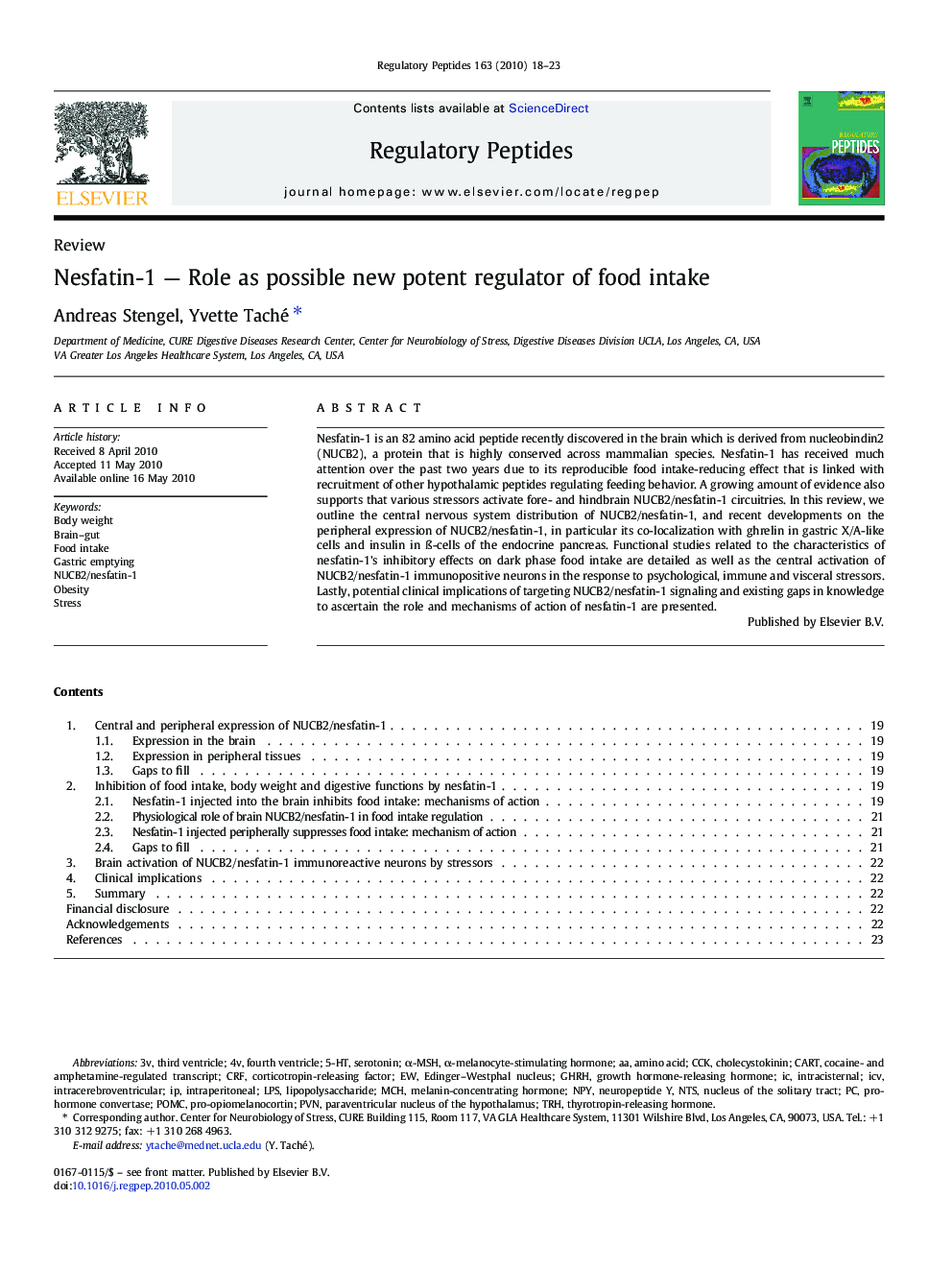| کد مقاله | کد نشریه | سال انتشار | مقاله انگلیسی | نسخه تمام متن |
|---|---|---|---|---|
| 2022789 | 1542422 | 2010 | 6 صفحه PDF | دانلود رایگان |

Nesfatin-1 is an 82 amino acid peptide recently discovered in the brain which is derived from nucleobindin2 (NUCB2), a protein that is highly conserved across mammalian species. Nesfatin-1 has received much attention over the past two years due to its reproducible food intake-reducing effect that is linked with recruitment of other hypothalamic peptides regulating feeding behavior. A growing amount of evidence also supports that various stressors activate fore- and hindbrain NUCB2/nesfatin-1 circuitries. In this review, we outline the central nervous system distribution of NUCB2/nesfatin-1, and recent developments on the peripheral expression of NUCB2/nesfatin-1, in particular its co-localization with ghrelin in gastric X/A-like cells and insulin in ß-cells of the endocrine pancreas. Functional studies related to the characteristics of nesfatin-1's inhibitory effects on dark phase food intake are detailed as well as the central activation of NUCB2/nesfatin-1 immunopositive neurons in the response to psychological, immune and visceral stressors. Lastly, potential clinical implications of targeting NUCB2/nesfatin-1 signaling and existing gaps in knowledge to ascertain the role and mechanisms of action of nesfatin-1 are presented.
Journal: Regulatory Peptides - Volume 163, Issues 1–3, 9 August 2010, Pages 18–23